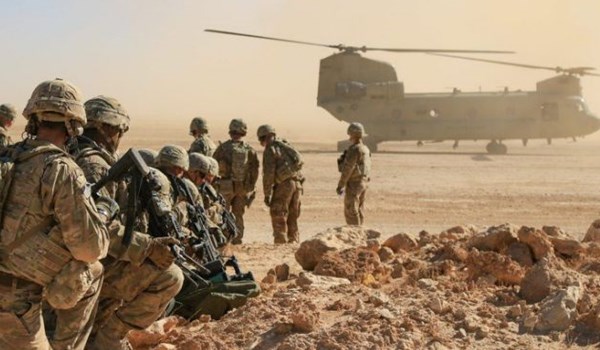
That seems to have been premature, however, with both government and Taliban officials saying that the reports were incorrect, and that there is still much to be worked out, with several options serving as potential basis for the talks.
US negotiator Zalmay Khalilzad has urged both sides to show resilience, saying that the alternative would be to repeat past mistakes from 19 years of war. Talks are likely to take some time, but both sides seem to agree they can’t give up on them. With the US advancing no full military pullout, however, both sides still want to have a framework of a post-war deal in place by the time all occupying troops are gone.
After all, this is still a divided country, with more than 200,000 people dead, more terrorist organizations, and an unemployment rate exceeding 30 percent: this is what the US has brought to Afghanistan in 19 years under the bogus war on terror.
On February 29, representatives from the U.S. and the Taliban reportedly signed an agreement in Doha. On the premise that the two sides abide by the relevant provisions, the US military will reduce its troops in Afghanistan within 135 days after the signing of the agreement, and all foreign troops will withdraw from Afghanistan within the next 14 months.
But can the US really withdraw its troops from Afghanistan before May 2021 as scheduled? The most direct reason why the US signed an agreement with the Taliban this year (election year) is for Trump's campaign. But the most fundamental reason for the withdrawal of some American troops from Afghanistan is the strategic contraction caused by the decline of US power. Since the beginning of the new century, compared with the rapid rise of other world powers, the relative decline of US power is an indisputable fact.
What’s more, in recent years, the United States has concentrated its main forces in the Asia-Pacific (Indo-Pacific) region, which is closely related to the competition among big powers. The importance of the Middle East and Central Asia, where Afghanistan is located, has not declined, though.
The impact of the US withdrawal on the situation in Afghanistan depends on the US withdrawal plan. The first option is for the US to fulfill its promise and completely withdraw its troops. After 19 years of continuous attacks by the US and its allies, the Taliban have not been wiped out, but have become stronger. They not only controlled most of Afghanistan's territory, but also forced US to sit down and negotiate with them.
If the US military completely withdraws from Afghanistan in accordance with the agreement, based on the current balance of forces in Afghanistan, peace will return to the country. This is tantamount to declaring that the United States has once again gone through the failure of Vietnam War and confirmed the decline of the US. This is what the US does not want to face.
The second option is the Syrian model, in which the United States retains control of only a few key areas. From the geopolitical point of view, for the US, the most critical area in Afghanistan is the Wakhan Corridor connecting Afghanistan and China. However, the corridor is extremely small and surrounded by China, Pakistan and Tajikistan.
In terms of natural resources, Afghanistan is rich in energy and mineral resources, with a value of more than 3 trillion US dollars. However, due to transportation difficulties and lack of funds, most of the resources have not been opened up and are distributed throughout Afghanistan. Unless the United States controls the entire territory of Afghanistan, it cannot ensure effective control of most resources.
The third option is a limited withdrawal of troops to maintain occupation. It is not even ruled out that the United States once again increased the number of troops stationed under the same pretext. Although this plan will continue to put Afghanistan in a state of division and turmoil, it will help the US to continue to control Afghanistan in the context of strategic contraction. The only shortcoming is that the US will continue to kill and maim even more civilians, too. And polls show that most Afghans do not agree that the US continues to occupy their country.

No comments:
Post a Comment